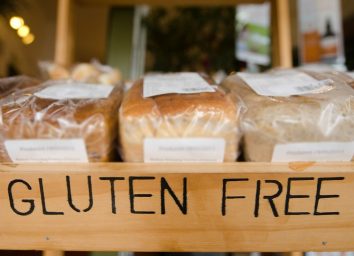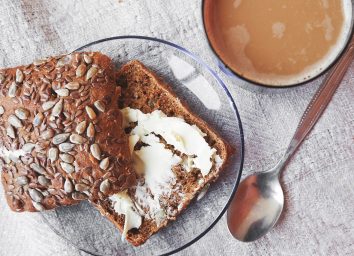Everything You Need to Know About the DASH Diet

Even though it's been around since the 1990s, the DASH diet has been in the spotlight lately. People are drawn to this diet for a host of reasons, from wanting to improve their cardiovascular health to losing weight to simply eating healthier.
"The DASH diet stands for Dietary Approaches to Stop Hypertension, and was created to help people manage and lower their high blood pressure," says Maxine Yeung, MS, RD, CPT, CHWC, a wellness coach and founder of The Wellness Whisk.
Since its creation, the diet has taken on new life as a popular eating strategy for people with and without cardiovascular issues. That's because its benefits extend far beyond lowering blood pressure.
Want in on the craze? Read on to learn what the DASH diet is, what foods are allowed, the potential benefits and drawbacks of the diet, plus some expert tips for successfully adopting this healthy eating plan.
What is the DASH diet?
The main focus of the DASH diet is "helping people reduce their intake of sodium and [avoid] higher-calorie fatty foods that may [increase] blood pressure, which can eventually lead to heart disease, stroke, high cholesterol, and/or kidney failure," says Lisa Samuels, RD, founder of The Happie House. "This diet was created after a study showed that those who follow a plant-based diet had a lower risk of developing high blood pressure. Therefore, the diet is low in red meat and higher-calorie foods with added sugars and saturated fat."
This dietary approach is ranked as one of the top healthy eating plans, says Toby Smithson, MS, RDN, LD, CDE, founder of DiabetesEveryDay and author of Diabetes Meal Planning and Nutrition for Dummies. It's also ranked as a top-rated successful diet by U.S. News & World Report.
What foods are allowed on the DASH diet?
What all DASH diet foods have in common is that they're generally low-sodium, Samuels says. To that end, the diet tends to "focus on whole, natural foods such as fruit, vegetables, whole grains, lean protein (poultry, lean beef, beans), and healthy fats in the form of fish, nuts and seeds, and certain types of oils."
As a collective, these food choices are rich in calcium, fiber, magnesium, and potassium. Yeung notes that the diet encourages limiting foods that are high in saturated fat, sodium, or added sugar.
What are the specific guidelines?
"The DASH eating plan calls for a certain number of daily servings from food groups," Smithson says. For instance, in a 2,000-calorie diet, a person would include:
- Whole grains: 6-8 servings per day
- Vegetables: 4-5 servings per day
- Fruits: 4-5 servings per day
- Fat-free or low-fat milk and milk products: 2-3 servings per day
- Fats and oils: 2-3 servings per day
- Lean meat, poultry, and fish: 6 oz or less per day
- Nuts, seeds, and legumes: 4-5 servings per week
- Sweets and added sugars: 5 servings or fewer per week
What are the health benefits of the DASH diet?
"The DASH diet is backed by evidence-based research and helps you meet your nutritional needs while reducing your risk of heart disease," Yeung says. "In addition to lowering blood pressure, the DASH diet has also been shown to lower LDL 'bad' cholesterol and help manage diabetes."
Even if you don't have hypertension or other pressing health concerns, Samuels says the DASH diet can offer several more benefits:
"This diet can be beneficial because it emphasizes whole, natural foods that are vitamin and fiber-rich," she says. "This diet may also aid in weight loss because you are consuming naturally healthy, lower-calorie foods that combat inflammation. This diet can also prove beneficial in preventing other diseases and chronic conditions such as cancer (particularly breast cancer and colorectal cancer), diabetes, and heart disease."
What are the drawbacks of the DASH diet?
Most of the drawbacks associated with the DASH diet revolve around the fact that adopting it may require some lifestyle changes.
For instance, Yeung says, "for people used to diets high in salt, they may find this diet bland in the beginning. The good news is that your taste buds will adjust over time and you will become more sensitive to salt."
Because the DASH diet focuses on whole foods, Yeung says it "can be challenging to maintain if you tend to dine out a lot or rely on prepackaged foods."
Smithson notes that this diet may also pose some unique challenges for people with diabetes. "People with diabetes need to keep in mind the higher focus on carbohydrate-containing foods in this meal plan," she says. "The recommended carb foods (whole grains, fruit, milk and yogurt, starchy vegetables, and beans) are healthy choices, but will need to be balanced into their meal plan."
Finally, Yeung suggests this diet may not be ideal for people who prefer a concrete eating plan. "There is no strict plan to follow, just guidelines," she says.
How to follow the DASH diet
Interested in giving this eating plan a try? Get started—and increase your chances of success—with these expert tips on how to follow a DASH diet:
- Transition gradually. "If you are not used to eating sources high in fiber, gradually introduce them to your diet to avoid excessive bloating," Yeung says.
- Make a plan. Even though the DASH diet doesn't usually involve a strict eating plan, Samuels says it's helpful to plan your grocery shopping and commit to meal prepping. "This will make it easier to resist the temptation of non-DASH-friendly foods," she says.
- Emphasize whole foods. "Focus on eating whole foods—fruits, vegetables, grains, etc.," Yeung says. "The less manipulated the food, the more nutritious it is likely to be."
- Avoid the salt shaker. "When cooking, use as little salt as possible, and season your food with fresh herbs like basil and rosemary and other flavorful spices such as pepper, turmeric, garlic, etc.," Yeung advises.
- Get creative. "You can create your own seasonings and spice blends to season your food that might even taste better than salt," Samuels says. "Use those condiments that have been sitting in your fridge and make your own concoctions!"
- Track your progress. "Keep a food journal to track what and how much you are eating," Yeung suggests. "This helps increase your awareness of your salt and saturated fat intake, and the nutrients you want and need."
- Keep an open mind. "There are many types of fruits, vegetables, and whole grains, and it could be fun to get creative and try one new item from each food group each week," Yeung says. "This helps broaden your food choices and keep your diet interesting."
- Change your perspective. "Remember that this diet is meant to be a tool in your arsenal for a healthy lifestyle," Samuels says. "It is not a 'diet,' but a way of life that will help you feel the best you can in your body."








